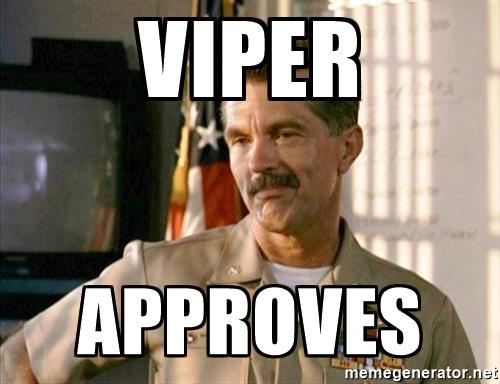Sinistar
En-Route
- Joined
- Sep 9, 2016
- Messages
- 3,712
- Display Name
Display name:
Brad
This weekend I flew to the Delta where I originally trained. I like to go there about every 4th flight or so to practice T&G's on the long runway and generally keep familiar in a busier, controlled airport. I often learn something new and that day added another lesson.
I did my normal approach, got ATIS and announced 10miles out. I was already flying into a light headwind so this would be either a long straight in 10L or 10R or a right base for 10R. They asked me to announce at 3miles for a straight in on 10R. About 3.5miles out I announced "Skylane12Q 3miles straight in 10R". And the response was "Cessna12Q Cleared to land 10R, make best possible speed". Actually they may have said "Best Forward Speed" so not quite sure there? I repeated it back.
So I just kept it flying normal (about 140mph ground speed). I knew if I got to 1 mile at this configuration I'd only have 30sec and screw it all up. So about 1.75miles out I pulled carb heat and first notch of flaps (okay in the 182) - that combo really starts slowing things down. I then pulled the power back a lot more than I would normally at that distance straight out. I needed to get under 100mph for 20deg flaps and that took a bit longer than I expected. That slowed me down enough that I was able to go 30deg, push the prop in and then 40deg and by then I was on short final with 3white/1red. Slipped it pretty good and landed about 300ft beyond where I normally would.
So you can tell it was new to me and rushed. At the same time I wanted to give my best shot and could always go around. I figured this was to help other landing traffic farther out? Or maybe they were planning to move pattern traffic on 10L to 10R.
So my normal round of questions
1.) What exactly does "Best Possible Speed" mean from ATC's directive.
2.) Was I supposed to report the speed I was comfortable with and then fly that speed?
3.) Is there a distance from the airport where this directive no longer matters (eg. 2 miles)?
4.) Is there also a "Best Forward Speed"? If so how is it different?
5.) For something slower like us GA planes, what is a good distance to start slowing down and still meet their needs?
6.) Lets say you are unable (read: uncomfortable with this) should you just say 'Unable" or say something like "Unable, prefer a base leg to final"?
I did my normal approach, got ATIS and announced 10miles out. I was already flying into a light headwind so this would be either a long straight in 10L or 10R or a right base for 10R. They asked me to announce at 3miles for a straight in on 10R. About 3.5miles out I announced "Skylane12Q 3miles straight in 10R". And the response was "Cessna12Q Cleared to land 10R, make best possible speed". Actually they may have said "Best Forward Speed" so not quite sure there? I repeated it back.
So I just kept it flying normal (about 140mph ground speed). I knew if I got to 1 mile at this configuration I'd only have 30sec and screw it all up. So about 1.75miles out I pulled carb heat and first notch of flaps (okay in the 182) - that combo really starts slowing things down. I then pulled the power back a lot more than I would normally at that distance straight out. I needed to get under 100mph for 20deg flaps and that took a bit longer than I expected. That slowed me down enough that I was able to go 30deg, push the prop in and then 40deg and by then I was on short final with 3white/1red. Slipped it pretty good and landed about 300ft beyond where I normally would.
So you can tell it was new to me and rushed. At the same time I wanted to give my best shot and could always go around. I figured this was to help other landing traffic farther out? Or maybe they were planning to move pattern traffic on 10L to 10R.
So my normal round of questions
1.) What exactly does "Best Possible Speed" mean from ATC's directive.
2.) Was I supposed to report the speed I was comfortable with and then fly that speed?
3.) Is there a distance from the airport where this directive no longer matters (eg. 2 miles)?
4.) Is there also a "Best Forward Speed"? If so how is it different?
5.) For something slower like us GA planes, what is a good distance to start slowing down and still meet their needs?
6.) Lets say you are unable (read: uncomfortable with this) should you just say 'Unable" or say something like "Unable, prefer a base leg to final"?


